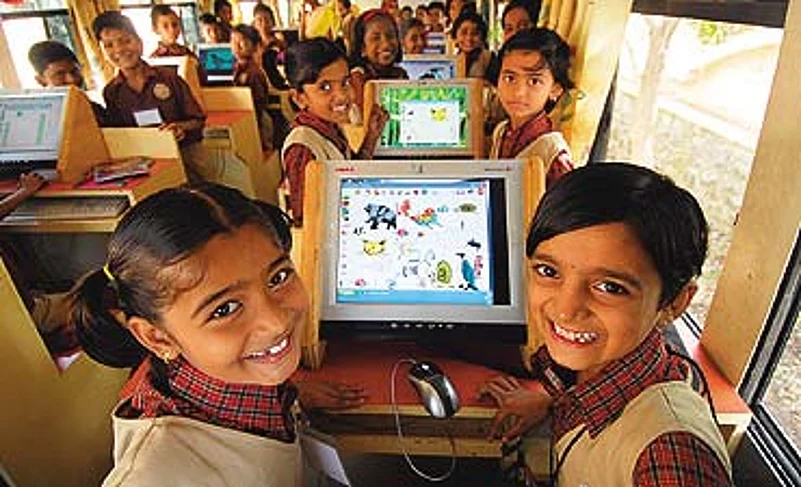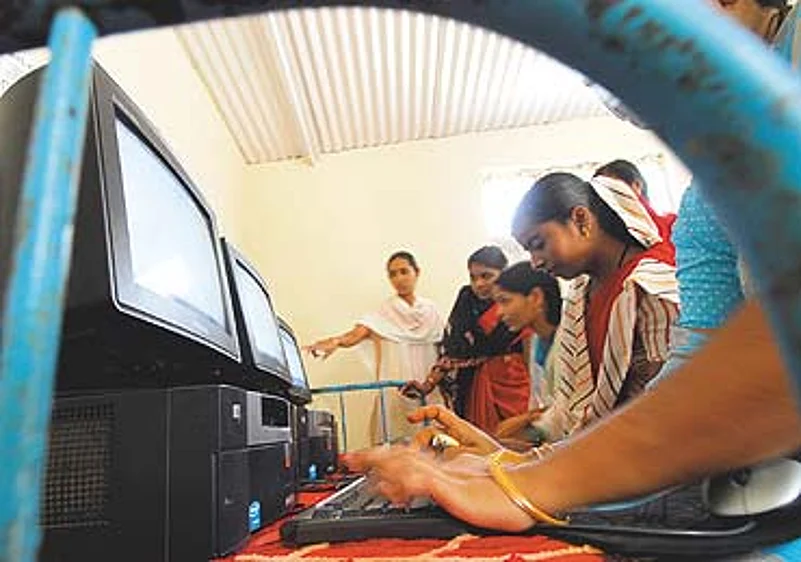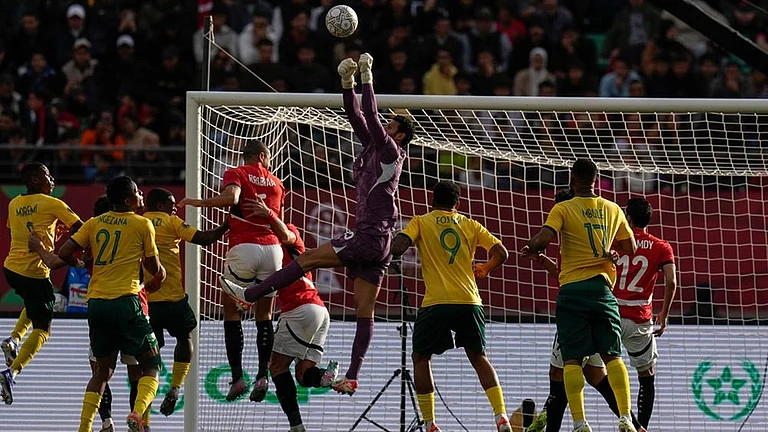It was a power dinner. But it was soon to become a power-hungry one. Early September, Union agriculture minister Sharad Pawar hosted a dinner for Intel chairman Craig Barrett during his ninth visit to India. A few high-profile cabinet ministers like FM P. Chidambaram and aviation minister Praful Patel were present on the occasion. So were a number of young turks—young MPs from North India who still have the desire to change the lives of people in their constituencies.
Surprisingly, the young parliamentarians had only one request for Barrett. No, they did not want Intel to set up its next microprocessor factory in India, or their constituency; they wanted the global chip giant to initiate its next social sector project in their area. Clearly, the MPs were enthused by the fact that Barrett had inaugurated a rural e-healthcare project in Tindivanam, 140 km away from Chennai and hometown of Union health minister Anbumani Ramadoss, the previous day.
They were also excited about the fact that Intel had set up a similar education-cum-e-healthcare project in Baramati (Maharashtra)—the constituency of Union agriculture minister Sharad Pawar—in 2006. In fact, Baramati was declared as one of Intel's five model cities worldwide that the company wanted to showcase. The MPs had no doubts that the Tindivanam and Baramati projects, part of Intel's $1 billion World Ahead Programme, had catapulted the sites into international prominence.
It seems that, willingly or not, Intel is getting sucked into a political vortex, where it may come under pressure to launch its social initiatives in politically significant regions in India. However, Intel dispels all arguments about the choice of locations, saying they were just suitable places with the necessary ingredients. Explains Barrett, "We had to make a start someplace, and Baramati was a total fit." The company adds that because they happened to be the constituencies of popular politicians, it helped to get the clearances much faster and get the projects on-ground sooner.
At Baramati, Intel put in place a project where for the first time in rural India, cardiac and ophthalmic diagnosis was being conducted through an online link with premier hospitals like Narayan Hrudalaya in Bangalore and Sankara Nethralaya in Chennai. The company also helped in the spread of computer education by donating PCs and educational content to local schools. The company also initiated the setting up of community service centres for disseminating information to farmers with the aid of technology and the internet.

A mobile computer van in Baramati
The Tindivanam project, in comparison, is bigger and focuses on e-healthcare with wireless technology to bring treatments closer to people. In both the projects, the diagnostic report can be obtained from experts sitting hundreds of miles away within 10-30 minutes. In the past, villagers had to travel hundreds of kilometres and wait for a couple of months to get these reports. And since both the hospitals are state-owned, services are either free or available at nominal costs.
At the same time, Intel has launched a healthcare project in a Tindivanam school, where students can use technology to track the health records of their classmates and to check for malnutrition, eyesight and related ailments. During Barrett's visit to the village, Ramadoss said that the project would act as a pilot for the National School Children Health Programme which would soon be taken up with the HRD ministry. He also announced that four such projects would be taken up in different parts of the country. Intel officials said that 50 schools in Tamil Nadu will be provided with broadband support to commence the school health monitoring programme.
While there are no doubts about the social intentions of Intel, and its desire to improve the lives of the poor in India through the use of technology, there is a growing feeling among experts that Intel still has to learn a lot about operating in social sectors in developing nations. One of the learnings has been to associate with credible and critical local partners. While in the case of Baramati, Intel went ahead with domestic associates, it has involved prominent names like TCS in Tindivanam.
In future, Intel will partner with 16 organisations, including S.N. Informatics, Manipal University, NIIT, Apollo, Fortis Healthcare, Educomp Solutions, Digital Empowerment Foundation, Comat technologies and Baramati's Vidya Pratishthan Institute of Information Technology (VIIT). While most work will be done by the partners, Intel is likely to focus on technical expertise, training and coordination. Agrees Barrett, "Intel is just one company and is part of the glue that pulls all players together."
Another lesson that the chipmaker has learnt is that the pilots should be replicable on a larger scale across the country. Barrett asserts that he wishes to carry Baramati's successful model to different parts of India under a broad programme. He adds, "I wish we were as successful in the US as we are in India. We are committed to such projects and have a holistic view on education. We have followed up on Baramati and are monitoring the work there, and want to take it to other places."
Unfortunately, when Outlook revisited Baramati 10 months after the launch of Intel's project, it found that the organisation had to learn a few more lessons. The healthcare project was progressing slowly, and there seemed to be a growing discontent among locals about the community service centre project. Local officials felt that Intel had to show greater commitment towards its stated social objectives. Says Sandeep Kutwal, who's responsible for the Katewadi community service centre, "After the initial steps, there has been very little or no involvement from Intel."

Women learning computers in Baramati
Ninad Vengurlekar, VP, IL&FS Education & Technology Services, which runs the centres, feels that "the real and basic needs of the farmers and villagers have to be addressed" through the service centres. But the Baramati service centre, instead of helping farmers, was functioning as a one-stop-shop for digital photography, computer horoscopes, matrimonial services and job searches. It was even selling mobile phones and recharge cards. Asks Amol Goje, director, VIIT, "Are we really interested in these kiosks for information dissemination, or to run a 6x6 ft village micro mall?"
Another indicator that there may be some form of a disconnect between corporate intentions and ground realities is that both the computers at the community service centre in Katewadi village were running on processors manufactured by Intel's bitter rival, AMD. Sources told Outlook that the four new centres planned in Malegaon, Korhale, Lasrne and Sangvi, were likely to have the same AMDchips in their computers. Given the passionate global rivalries in the technology sector, it is impossible to believe this. It's like the Coke CEO having a Pepsi at a media conference.
Last year, in collaboration with Aircel, Intel launched Wi-Max in Baramati. However, the project was active only for a month and the infrastructure has been dismantled since it did not get the requisite government clearances. Katewadi village is now using the infrastructure set by another service provider, which also feeds the computers at the village's community service centre. This seems surprising, to say the least, since the project has been set up in Pawar's constituency.
The e-healthcare project at the government hospital in Rui village, near Baramati, has witnessed an increasing local interest. Local doctors told Outlook that it attracts 30-40 patients a month, who avail of the e-diagnosis facilities. But it hasn't become as popular as other private clinics. Many patients decide to visit the latter, even though the Intel-financed hospital is almost free. The day Outlook visited the hospital, there were just about 10 patients despite the hospital conducting an eye check-up camp for the villagers.
But the situation may improve as the state government plans to extend the e-diagnostics model to all the 14 tehsils in Pune district. With an estimated outlay of Rs 10 crore, it can involve more villagers and make it a mass affair. While the technology blueprint is ready, the financial aspects are still to be finalised. An Intel team is expected to discuss the details with the local authorities soon. In many social projects, scale can become the critical component which makes the difference between success and failure.
Therefore, if Intel has to ensure the success of its social initiatives, it needs to act swiftly. Like it does in the marketplace to combat and fight competitors. It needs credible local partners who can monitor and make mid-course corrections. It needs to get the Centre and state governments to replicate the pilots and models. It needs to involve local communities and administrators in a big way. Most importantly, Intel needs to be on the 'inside', in the mindsets of local communities, as it does in the case of the computer.






















